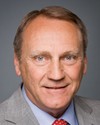I'm from Labrador myself, so I'm familiar with your area. Certainly I've worked in Labrador hydro.
From a subsidy perspective, residential customers have a subsidy, and it's seasonal. During the summer months, the first 700 kilowatt hours have a subsidy applied to them. Then, in the winter months, the first 1,000 kilowatt hours have a subsidy applied to them.
Nobody in the north pays the actual cost, their true cost of electricity or heating or anything. It's all heavily subsidized by the GN, the Government of Nunavut. The cost of energy is paid somewhere around the vicinity of 75% to 80% by GN in the north—that's heating and electricity—because the GN is one of the largest consumers as well.
Commercial customers pay a subsidized rate, but nowhere near what the residential customers have. The only other subsidy available to them is that small companies can apply to the Government of Nunavut, if they demonstrate that the costs for their businesses are in the $1 million to $2 million range. They're able to apply for a subsidy for their electrical costs for the year from the GN.



